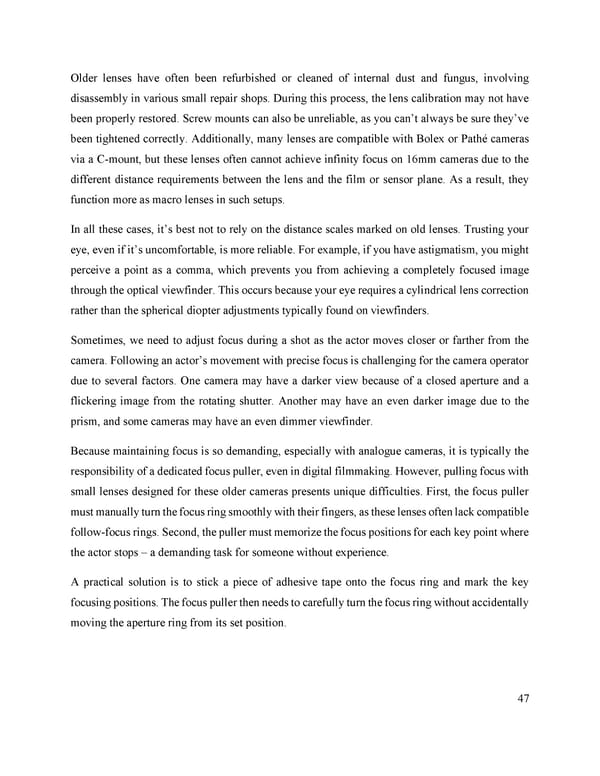Older lenses have often been refurbished or cleaned of internal dust and fungus, involving disassembly in various small repair shops. During this process, the lens calibration may not have been properly restored. Screw mounts can also be unreliable, as you can’t always be sure they’ve been tightened correctly. Additionally, many lenses are compatible with Bolex or Pathé cameras via a C-mount, but these lenses often cannot achieve infinity focus on 16mm cameras due to the different distance requirements between the lens and the film or sensor plane. As a result, they function more as macro lenses in such setups. In all these cases, it’s best not to rely on the distance scales marked on old lenses. Trusting your eye, even if it’s uncomfortable, is more reliable. For example, if you have astigmatism, you might perceive a point as a comma, which prevents you from achieving a completely focused image through the optical viewfinder. This occurs because your eye requires a cylindrical lens correction rather than the spherical diopter adjustments typically found on viewfinders. Sometimes, we need to adjust focus during a shot as the actor moves closer or farther from the camera. Following an actor’s movement with precise focus is challenging for the camera operator due to several factors. One camera may have a darker view because of a closed aperture and a flickering image from the rotating shutter. Another may have an even darker image due to the prism, and some cameras may have an even dimmer viewfinder. Because maintaining focus is so demanding, especially with analogue cameras, it is typically the responsibility of a dedicated focus puller, even in digital filmmaking. However, pulling focus with small lenses designed for these older cameras presents unique difficulties. First, the focus puller must manually turn the focus ring smoothly with their fingers, as these lenses often lack compatible follow-focus rings. Second, the puller must memorize the focus positions for each key point where the actor stops – a demanding task for someone without experience. A practical solution is to stick a piece of adhesive tape onto the focus ring and mark the key focusing positions. The focus puller then needs to carefully turn the focus ring without accidentally moving the aperture ring from its set position. 47
 Lost Analogue: Exploring Film, Music, and Interdisciplinary Methods in Education Page 47 Page 49
Lost Analogue: Exploring Film, Music, and Interdisciplinary Methods in Education Page 47 Page 49